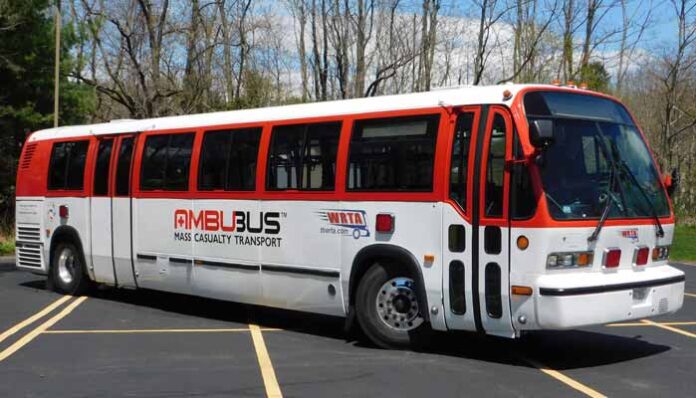How much mass casualty transport and patient evacuation capacity does a community need? This paper presents a maturity model that enables emergency and evacuation planners to assess their readiness to handle large scale mass casualty or patient evacuation incidents….
Whatever the cause, public health professionals, emergency medical service providers, and emergency managers need to be prepared for these types of events with a more scalable, affordable, and flexible, mass casualty transport capability.
Many communities attempt to manage mass casualty and patient evacuation situations through mutual aid agreements with other communities or healthcare systems. However, when an event is as massive as Hurricane Katrina or Superstorm Sandy, all the communities in a region may be affected and unable to send ambulances to help. Even if they send ambulances, the response and patient evacuation times could take longer due to the lack of familiarity of local traffic patterns by the ambulance drivers from other communities.
Up to now, the only other option would be to buy and staff additional ambulances or purchase specialized, advanced life-saving equipped, multi-patient medical transport vehicles (MPMT).
By having one permanently converted AmbuBus and additional AmbuBus conversion kits to handle patient surges in situations where there is advance warning such as hurricanes, a community can have sufficient mass casualty transport capability to meet almost any situation.
Analysis
The AmbuBus is an innovative approach to mass casualty rescue response. It brings into mind the community it is serving regarding mass casualty response. Some communities may be less served than others based on economic and social status. Thinking about ways to reuse old school buses or metro buses as a fall back option is a way to consider underserved populations without draining their financial resources. Additionally, the ability to transform a school bus into a functioning AmbuBus by two people in under two hours takes allows for flexible response. What if all school buses were automatically equipped to turn into an AmbuBus? This would ensure that more people in the community would have access to medical care during a mass casualty event. What are other prevalent modes of transportation that most communities have access to? Additionally, this would allow greater opportunity to train people within the community who aren’t first responders by profession. What if it wasn’t just buses that could be transformed into first response transport? How can we use other modes of transportation like public transit trains or even subways? This paper gives resources as well to determine how many response vehicles are needed for different types of communities.
The AmbuBus has many different adaptations that can be used for many varied situations. For example, it can accommodate wheelchairs and large oxygen systems. However, after further scrutiny, it feels like this design is too good to be true and that this system may have spread itself too thin. I think it would be best to focus on an aspect like transporting more than two bodies than rather designing for everything that can go wrong during a mass casualty event.
Source
“A Scalable Approach to Mass Casualty Transport,” First Line Technology, accessed August 30, 2023
https://www.firstlinetech.com/wp-content/uploads/2019/12/Mass-Casualty-Transport-White-Paper-2.pdf




